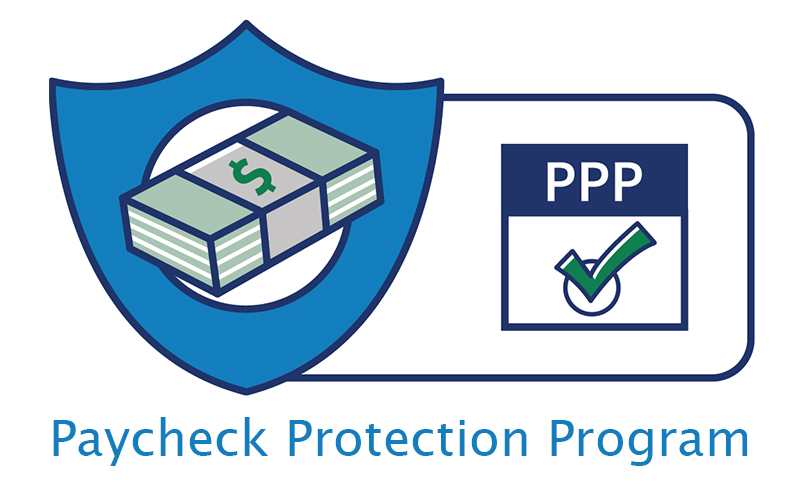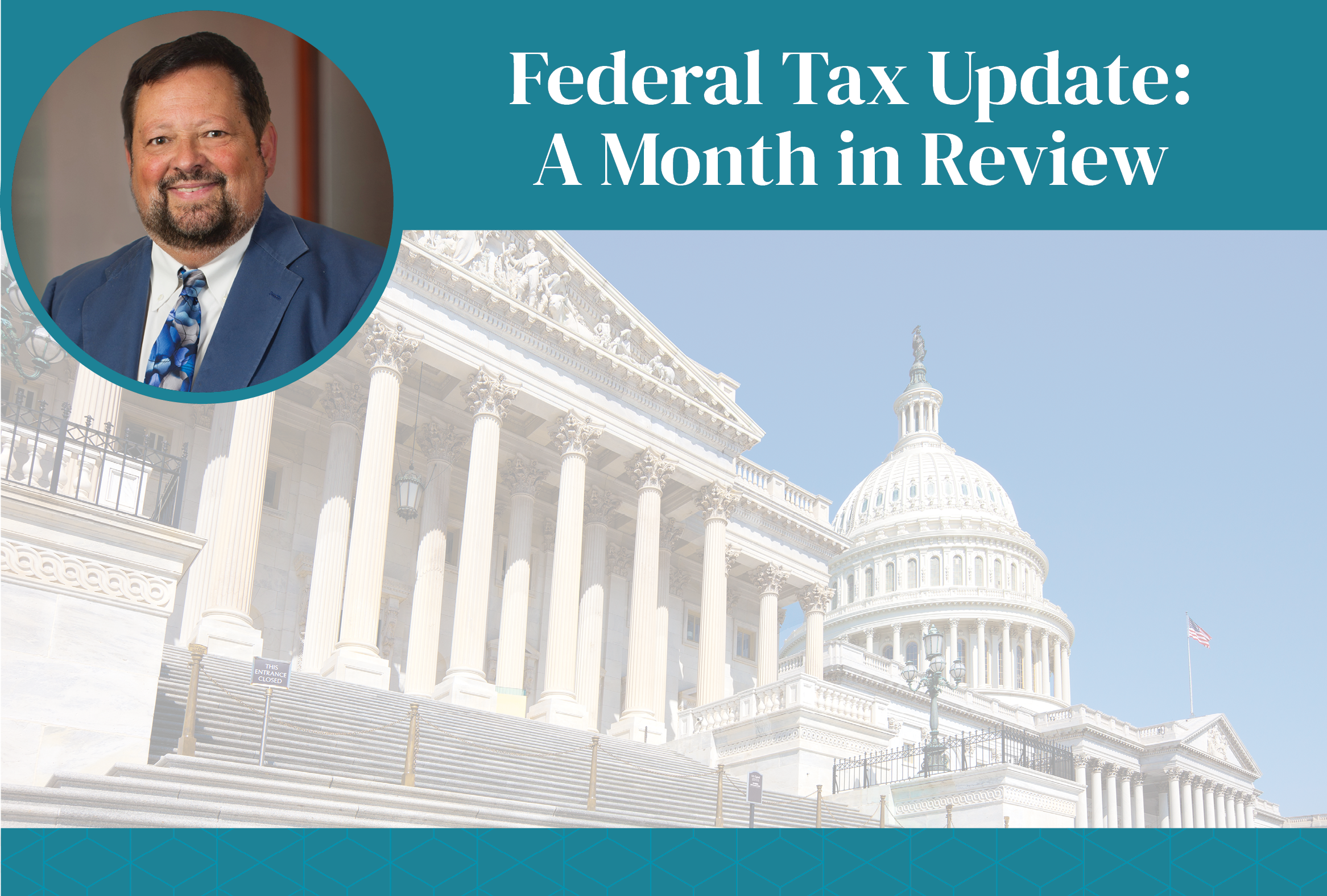May 19th, 2020
Updated PPP Loan Forgiveness Guidance from SBA
Posted in: Business Law Featured Tax Law Tagged: Coronavirus, Mark W. Schweighofer, Rebecca A. O'Neill
Author: Mark W. Schweighofer, Rebecca O'Neill

On May 15, 2020, the Small Business Administration (“SBA”) issued much anticipated guidance—in the form of a Loan Forgiveness Application and instructions—to calculate potential forgiveness amounts for loans issued pursuant to the Paycheck Protection Program (“PPP”). While this guidance provided welcome clarity on a number of issues, questions remain as borrowers seek to maximize the likelihood that their loans will be forgiven, in whole or in part. For additional guidance, please see our previous discussion on PPP loan forgiveness.
Also download and view the PPP application.
Alternative Payroll Covered Period
The PPP contemplated loan forgiveness for certain amounts spent on payroll and other permitted expenses during the eight-week (56 day) “Covered Period” that commenced on the date the borrower received its PPP funds. The new guidance authorizes the use of an “Alternative Payroll Covered Period” as a matter of administrative convenience for borrowers whose payroll cycle did not neatly overlap with its receipt of the PPP funds. If a business has a biweekly or more frequent payroll cycle, it may elect to have the Alternative Payroll Covered Period commence on the first day of the next payroll cycle after receipt of the PPP funds. The instructions also clarify that payroll costs incurred but not paid during the last day of the Covered Period (or Alternative Payroll Covered Period) remain eligible for forgiveness, provided that such amounts are paid on or before the next regular payroll date.
Payroll Costs
The new guidance, consistent with the SBA’s previously issued frequently asked questions, appears to authorize the inclusion of gross compensation paid to employees in the computation of payroll costs, meaning that federal income taxes and federal payroll taxes withheld from an employee’s wages would be included in payroll costs. That said, it is important to note that the new guidance specifically refers to the Interim Final Rule on Paycheck Protection Program (“IFR”) in discussing payroll costs, which creates uncertainty because the IFR indicates that payroll costs do not include either the employee portion of payroll taxes or federal income tax withholding. Despite this continued ambiguity, based on the application itself and accompanying worksheets which contemplate the use of gross wages without reduction for payroll taxes and income tax withholding, at this time, we are comfortable advising borrowers to utilize gross wages in their forgiveness calculation.
Per the new guidance, payroll costs eligible for forgiveness include costs that are actually paid and incurred during the Covered Period/Alternative Payroll Covered Period. The guidance further notes that payroll costs are considered to be incurred for the purposes of forgiveness as of the date the employee’s pay is earned. Consequently, accelerated payroll payments will most likely not be eligible for forgiveness because they will not be deemed to have been earned at the time of payment. Additionally, while there is a special rule that allows borrowers to pay payroll costs after the Covered Period/Alternative Payroll Covered Period in limited circumstances as noted above, it appears that borrowers may be precluded from using PPP funds for payroll costs that accrued before the start of the Covered Period/Alternative Payroll Covered Period. In addition, the new guidance requires the borrower to list all employees who received compensation on an annualized basis of more than $100,000 during any pay period in 2019. Given that a one-time bonus payment may be in excess of $100,000 on an annualized basis, this requirement seems overly broad in addition to being onerous for borrowers because it requires them to examine every payroll period for each employee for 2019 to ensure proper reporting.
Eligible Non-Payroll Costs
While the new guidance did not alter the categories of non-payroll costs that are eligible for forgiveness (certain mortgage interest payments, rent payments and utility costs) or the maximum amount of such costs that can qualify for forgiveness (25%), it did build on prior guidance by providing that such costs must either be (i) paid during the Covered Period, or (ii) incurred during the Covered Period and paid on or before the next regular billing date, even if after the Covered Period. Additionally, it is interesting to note that unlike payroll costs, which need to be both paid and accrued during the Covered Period/Alternative Payroll Covered Period, the instructions for non-payroll costs in the new guidance appear to adopt an “either/or” approach, which appears to leave open the possibility of prepaying certain eligible non-payroll costs prior to the end of the Covered Period. We anticipate clarification on this topic to address this difference in treatment. Note that for the purposes of non-payroll costs, the alternative covered period is not available.
Reduction in FTEs and Safe Harbor
Consistent with prior guidance, the forgiveness application provides that the amount of forgiveness will be proportionately reduced if the borrower reduces the number of full time equivalent employees (FTEs) below the FTE count during the tested period (for non-seasonal businesses either February 15, 2019 -June 30, 2019 or January 1, 2020-February 15, 2020, at the election of the borrower). The FTE calculation uses a point system capped at 1 per employee (based on a 40-hour week), with those working less than 40 hours being rounded to the nearest tenth. Borrowers are also able to use a simplified method with any employee working less than 40 hours on average being assigned a value of 0.5. If the FTE count during the Covered Period is less than the FTE count during the historical period, the loan forgiveness amount will be proportionately reduced. Consistent with prior guidance, the forgiveness application permits a limited exception to avoid a reduction. Specifically, no reduction in forgiveness will occur in a situation where the borrower reduced its FTE count during the period of February 15, 2020 through April 26, 2020 if such reduction is restored to historical levels by June 30, 2020.
In a positive development for borrowers, the loan forgiveness application clarifies that no reduction in forgiveness will result if the reduction in FTEs is due to (i) a decrease in FTEs in a situation where the borrower made a good-faith, written offer to rehire an employee during the Covered Period or the Alternative Payroll Covered Period, which was rejected by the employee; or (ii) the departure of any employee who, during the Covered Period or the Alternative Payroll Covered Period (a) were fired for cause, (b) voluntarily resigned, or (c) voluntarily requested and received a reduction of their hours. Therefore, it appears that borrowers will not be punished as a result of an employee’s voluntary resignation (including retirement) or in situations where the employee was terminated for poor performance.
Compensation Reduction and Safe Harbor
Similar to a reduction in FTEs, the new guidance confirms that borrowers will see their forgiveness amounts reduced in the event of a reduction in compensation paid to employees during the Covered Period as compared to the most recent calendar quarter prior the borrower’s receipt of the PPP funds. Such reduction applies if compensation for those employees making $100,000 or less is reduced by more than 25%. The forgiveness application contains a detailed set of schedules and instructions for determining these amounts (which is determined on a per employee basis) as well as the amount of any reduction in forgiveness attributable to such decrease in compensation.
As with a reduction in workforce, there is a limited ability to restore compensation levels for certain employees and avoid a reduction in forgiveness. Specifically, if an employee’s compensation was decreased during the period of February 15, 2020 through April 26, 2020, and if such compensation is restored to at least 75% of such amounts as of June 30, 2020, the borrower’s loan forgiveness amounts will not be adversely impacted.
Calculating Forgiveness Amount
Consistent with prior guidance, the loan forgiveness application mandates that at least 75% of the forgiveness amount must be used for payroll costs during the applicable Covered Period. To accomplish this, the application calculates the forgiveness amount as the smallest of the following three amounts:
- All payroll and non-payroll costs paid and/or incurred (as applicable) in their applicable Covered Periods, minus salary reductions and further reduced by any reduction in FTEs;
- The entire PPP loan amount; and
- The payroll costs paid or incurred during the Covered Period/Alternative Payroll Covered Period divided by 0.75
For example, assume a borrower received a $100,000 PPP loan, of which $50,000 was used for payroll costs. Ignore calculation 1, above, for simplicity. $50,000/0.75 = $66,667, or put another way, $50,000 is 75% of $66,667, which is less than the entire $100,000 PPP loan amount. $66,667 is therefore the loan forgiveness amount. If instead borrower had used $80,000 of the $100,000 PPP loan for payroll costs, the relevant calculation would be as follows: $80,000/0.75 = $106,667. In this case, the lesser of the two numbers, $100,000 – the entire PPP loan amount – is the forgiveness amount.
The above example is for illustrative purposes only, and assumes no reduction in FTEs or salary, which would be represented in calculation 1.
Required Records
The instructions to the forgiveness application provide a detailed list of documentation/substantiation that must be provided as part of the forgiveness application process. For payroll costs, these documents include, without limitation: payroll costs, tax forms (e.g., Form 941) and payment receipts or account statements for non-cash compensation (health insurance and retirement plan contributions). The employer will also be required to provide documentation supporting its FTE computation for both the Covered Period and the historical period. With respect to the FTE/salary reduction events that will not reduce potential PPP loan forgiveness, including termination of employment either voluntarily (i.e., retirement) or involuntarily for cause, the SBA application requires that the employer maintain documentation of such terminations, but it does not require borrowers to submit such documentation with the loan forgiveness application. For non-payroll costs, borrowers must provide invoices, cancelled checks or other statements to support the payment of such expenses or the accrual of the same during the Covered Period.
Conclusion
The guidance set forth in the loan forgiveness application clarifies many, but by no means all, of the questions borrowers have been debating since the PPP was announced. We anticipate that additional guidance will continue to be issued as borrowers work through their Covered Periods. In addition, consistent with our prior guidance, we strongly encourage all borrowers to have a detailed and organized set of records to support their application for forgiveness. Finally, as noted by previous guidance, borrowers with loan amounts in excess of $2,000,000 will receive additional scrutiny, not only with respect to the use of PPP loan but also in meeting the certification requirement that the economic uncertainty at the time of the application made the PPP loan necessary to support ongoing operations. Documentation in support of the application can include, without limitation: current lack of access to outside capital, projections regarding loss of revenue, increased expenses, uncertain growth forecasts and similar estimates.
Please contact a member of Stein Sperling’s business or tax COVID-19 response team if you have questions.
You can find more on issues affecting businesses and individuals in our COVID-19 Resource Center.





